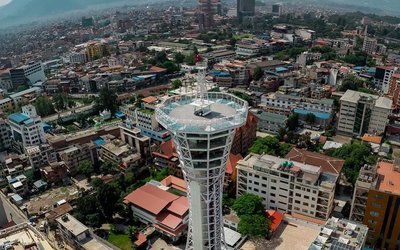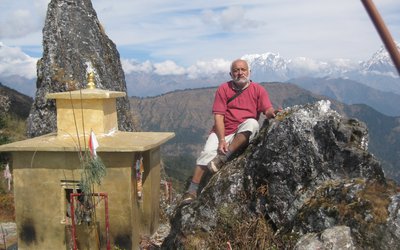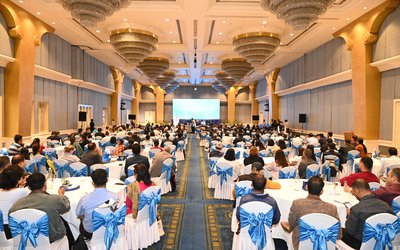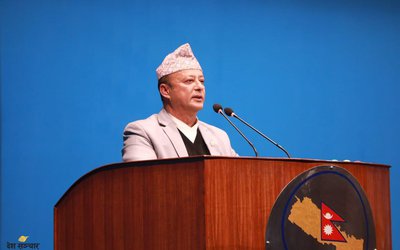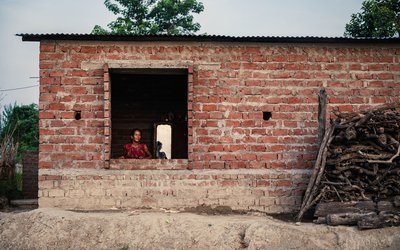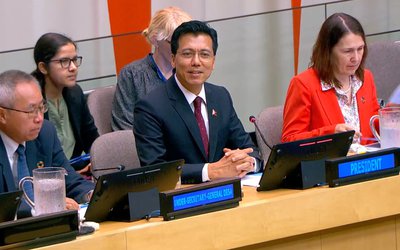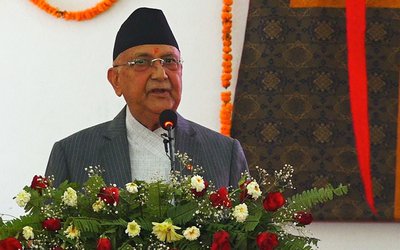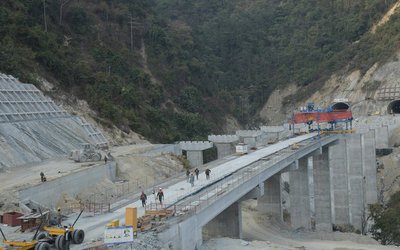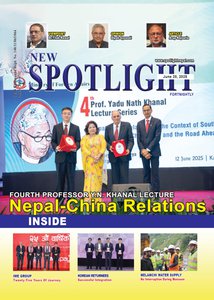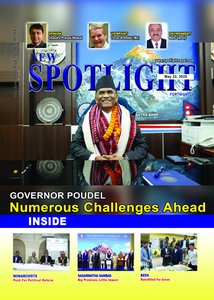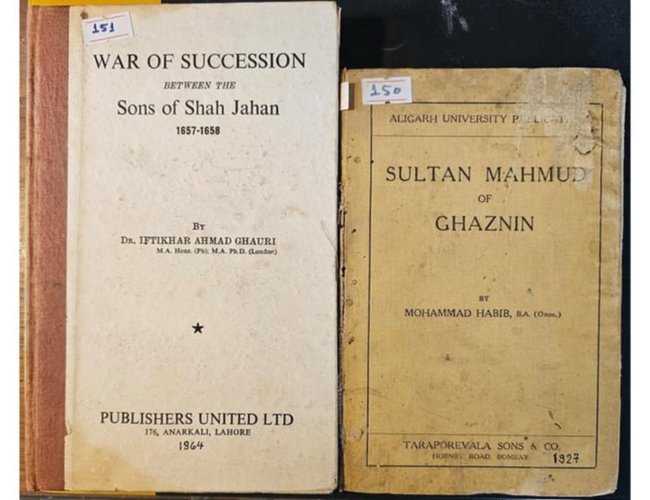
Those following various international media coverage of last week’s Indo-Pak skirmish had difficulties maintaining their sanity: whom to believe? Even the over-hallowed “international” media was suspect. So, who won? Did India, Southasia’s center of gravity, win or lose? With opinions all over the chart, there is the need to step back and reflect on the deeper root causes behind this conflict if genuine peace is to be found.
This is not the first ceasefire since 1948, and will probably not be the last either. All with the exception of 1971 (and Bangladesh liberation) happened after strong international pressure. The current one is all the more surprising with Trump’s short intervention. US has demonstrated it has little leverage in Gaza, Ukraine, Sub-Saharan Africa or in the tariff war with China. So how was it that a few phone calls from Washington was enough to get two nuclear powers to terminate operations and agree to come to the negotiating table. And what will they negotiate? Certainly not permanent, long-term peace, which, if it happily happened, would certainly help bring SAARC out of its coma!
Is Pax Americana, the successor to Pax Brittanica, so dominant in the internal wirings of these two British Raj fallout states that the umbilical cord that ties them to the Collective West has dominated their growth and behaviour? Or is it, as Samir Amin has so brilliantly described, that India and Pakistan are fully integrated into the Western capitalist world order as secondary entities, peripheral to the centers of New York and London?
Whatever the reason, Modi’s bromance with Trump and his hope to piggyback on the US to both counter China and achieve regional dominance has backfired. India’s inherited Raj colonial diplomatic outlook has left it with bad relations with all its neighbours – Sri Lanka, Maldives, now Bangladesh and even Bhutan. In Nepal, India’s four major economic blockades over the last half century rankles deep and is destined to do so for several generations: April-October 1962 lifted only due to the Sino-Indian war; 1 November 1970 to 26 August 1972 lifted due to Bangladesh war; 23 March 1989 to 1 July 1990 lifted after the Panchayat system was abrogated; and 23 September 2015 to 5 February 2016 in the aftermath of the devastating 2015 earthquake for Nepal making a constitution not to India’s liking.
Pakistan fares just as badly. Its current defense minister as well as its former foreign minister and leader of the important Peoples’ Party of Pakistan both admitted that the country (primarily its all-powerful military that has deposed and locked up its legitimate prime minister Imran Khan) has produced Islamist terrorists over the last thirty years to serve US interests in the region! This pandering to religious Sunni fundamentalists has ironically been done not just by the military but also by liberal democrats as well. After East Pakistan split off as Bangladesh in 1971, Zulfikar Ali Bhutto had the country’s constitution amended in 1974 to declare mild Muslim sects such as the Ahmadiyya’s as apostates. It forced the founder of its nuclear program (and future Nobel Prize winner in physics) Abdus Salam to leave the country!
The current flare-up began with the selected killings by Islamist terrorists of Hindu men tourists in Kashmir’s Pahalgam after verifying that they were not circumcised and could not recite the Muslim kalam. It has churned deep resentments, already stoked by the rise of the BJP and its RSS ideologues in India, among Hindus globally in the diaspora as well. Those roots go back in history beyond British rule to the very advent of Islam in Southasia along two tracks, one violently coercive and the other reflectively persuasive.
The Islamic scholar Habib (book pictured above) has described that historical process with remarkable insights. He divides the world’s major religions into two classes: Semitic (Judaism, Christianity and Islam) and Aryan (Hinduism, Buddhism and Jainism). Having originated in the harsh deserts, the former emphasize social ethics of group cohesion essential for survival, while the latter focus on metaphysical aspects of faith that are more individualistic and introvert. It was after the Muslim conquest of Persia that the reinterpretation of Islam took place in light of their earlier Aryan achievements of Zoroastrianism and Buddhism. Tasawwuf or Muslim mysticism and the subsequent Sufi trend in this direction of mysticism followed, which has many adherents not only in Shia but also Sunni Islam.
The spread of Islam in Southasia has occurred in parallel via these two tracks. Given that most Hindu rulers were presiding over a land and agriculture-based social order whereas much of the Muslim world was trade focused, Sufi teachers reached far-flung corners of Bengal and Indonesia along with their merchants, and rather peacefully. In contrast, Arab and Central Asian rulers brought much killing, looting, plundering and forcible conversion (or death!). Bin Qasim in 712AD, Mahmud Gazhni with 17 invasions between 1000-1027AD including the destruction of Somnath temple, Muhammad Ghori at the end of the 12th century, and Timur’s sacking of Delhi in 1398 are blood-stained histories that have overshadowed the works of peaceful Sufi saints.
Once the Central Asian conquerors had established their rule, they, however, toned down their violence and promoted Sufism. The Delhi Sultanate rule of the Lodhis and Tugluqs between 1300AD and the advent of the Mughals in 1526 saw such a peaceful interlude and a flowering of culture including the birth of Urdu, despite Timur’s massacre in between. It also saw the rise of Sikhism which was an indigenous response to the strong inclusive social aspects of Islam and an attempt to reform Hinduism, much as Buddha had nearly two millennia earlier. Moghul rule too, despite its origins in violence and an antipathy towards Delhi Sultans who were seen as having regressed in Muslim beliefs by being too soft on Hindus, saw significant ecumenism and accommodation with Hindu and other beliefs, especially during Akbar’s long rule. Akbar had set up a translation bureau, the Maktab Khana, which oversaw the translation of the Ramayana into Persian, the court language.
The real adaptation came with Akbar’s great grandson, crown prince Dara Shikoh, although that ecumenism was tragically squashed. Dara was the eldest of the four sons of emperor Shahjahan who was mystic on his own right, having studied under the Sufi mystic Mian Mir. He was also close to the seventh Sikh guru Har Rai. Realizing that some 90% of his future subjects were not of Muslim faith, he sought to understand Hinduism by discussing with pandits in Benares, and had the Upanishads translated into Persian (which further translated into German in the 19th century was what the philosopher Schopenhauer discovered, allowing him to be the only bridge between Western and Eastern philosophies).
Dara’s attempt to see the similarities between Sufi mysticism and Hindu Vedanta resulted in his seminal composition Majma ul Bahrain, translated as “the comingling of two oceans, Islam and Hinduism”. It was also to be the cause of his death: his rigidly orthodox Sunni younger brother Aurangzeb – who was a far better military strategist – not only defeated Dara in battle but, under pressure from Sunni clerics, had him beheaded for apostasy. His head was sent on a platter to his grieving father emperor Shahjahan whom he had imprisoned in Agra fort.
With that, the reconciliation between Muslims and Hindus (as well as Sikhs) in Southasia came to a tragic end. An attempt at peace between the two communities by the ninth Sikh Guru Tegh Bahadur in 1675AD was rejected by Aurangzeb who not only had him beheaded for not converting to Islam, but sawed in half as well as boiled in oil the Brahmin pundits who had accompanied him. It laid the groundwork for the eventual demise of the Moghul rule and the rise of the British Raj. Had Dara become the emperor of Hindustan instead of Aurangzeb, one can only speculate what new civilization would have arisen in South Asia that, in the words of Swami Vivekananda, “would have a Vedantic brain inside an Islamic body” but that only if we don’t just tolerate all religions but ACCEPT all as equally true.
In light of this historical background, while the Trump-brokered ceasefire between India and Pakistan is a welcome relief to the entire Southasian region, it is difficult to see a permanent, lasting peace in the days or years ahead. The entire spectrum of intractable issues – ranging from India’s unilateral abrogation of the Indus treaty to the fundamental belief of Semitic religions that all others must be brought to their faith – run counter to genuine peace without the rise of a new Dara Shikoh.
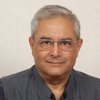
Dipak Gyawali
Gyawali is Pragya (Academician) of the Nepal Academy of Science and Technology (NAST) and former minister of water resources.
- Behind Nepal’s Political Instability: Flaws In Loktantra’s Ethical Foundation
- Jul 15, 2025
- Navigating An Uncharted, Unravelling World Order
- Jun 19, 2025
- Re-Thinking Democracy: Why South Asians Are worried
- Mar 17, 2025
- Nepal’s Governance Mired In Endemic Corruption
- Feb 20, 2025
- What Might The Age Of Trump Look Like?
- Jan 22, 2025

